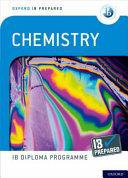PrefacetotheSecondEdition
Ithasbeen31yearssincethepublicationofthefirsteditionofthisbookand Ibelievethatthefoundationsandfundamentalsofthecombinedsubjectof aero-hydroacousticswerewell-establishedatthetimeofthefirstedition. However,inthetimesincethenwhiletherehavebeendevelopmentsinthose fundamentalstherehasalsobeenanextensivegrowthinapplicationsand methodsofapplications.Thisgrowthhasbeenmadepossiblebythedevelopmentofcomputationaltools,personalcomputers,dataacquisitionhardwareandsoftware,andsensors.Thesewerenotavailableatthetimeof edition1.Infactpersonaltoolssuchas, Matlab, Mathematica, Mathcad,and Labview,nowwidelyusedinacademicandcommercialapplicationswere notavailabletothereadereither.Thescienceofaero-hydroacousticphenomenahasreallybenefittedfromtheuseofsimultaneously-collectedmultichannelsensorarraysaswell.Finally,therangeofapplicationshasgrownunder thecombinedpullsofconsumerawarenessandintoleranceofnoiseand vibration,publiclegislationrequiringnoisecontrol,andmilitaryneeds.
Computationaltoolshavemadepossiblebothdirectnumericalsimulations forresearchanddetaileddesignengineeringapplications.Ihaveattemptedto selectivelyextendthecoverageofedition1intothesenewgrowthareaswhile atthesametimemaintainingthestructureandphilosophyofthebookandnot substantiallyincreasingitssize.Insomeareasthenewlydevelopednumerical technologieshavemadeitpossibletoconduct“numericalexperiments”that parallelandcomplementphysicalexperiments,therebyleveragingthecapabilitiesofboth.Ihaveusedsomeoftheseintheareasofjetnoise,boundary layernoise,androtornoiseasexamplestoaddresstheapplicationofnumericaltechniques.Ihaveavoidedgoingintonumericalmethods,however,since therearenownumerousbooksonthetechniquesofcomputationalfluid mechanics,largeeddysimulations,andfiniteelementmethodsmakingit duplicativetoaddressthesetechniques,themselves.
Theformalismsdevelopedherearesuitableforevaluationonapersonal computer,butclosed-formasymptoticsolutionsarealsogivenforimmediate interpretationforunderstandingtrendsindata.Thebookiswrittenprincipallyasareferencework,althoughitmaybeusedasateachingaid.The readerwillalwaysfindtheoreticalresultssupportedbystep-by-stepderivationsthatidentifyanyassumptionsmade.Forasmanysourcesofsoundas possible,eachchapterisillustratedwithcomparisonsofleading-orderformulas,measureddata,andresultsofnumericalsimulations.
InwritingthefirsteditionIprovidedacomprehensivelistofreferences ineachfocusarea.EachoftheseIreadandintegratedintothetext.Thiswas intendedinedition2,butIsoonfacedtherealitythatthenumberofpapers publishedinanyareaisnowtoolargetotreatinthismanner.Onejournal hasasearchenginethatprovidestheuserwithayear-by-yeardistributionof paperspublishedinaselectedarea.Theannualpublicationrateinonearea increasedinthatjournalbyafactorof10beginningin1999 2000. Accordinglyinthiseditionthelistofreferenceshasbeenexpanded,but admittedlylessexhaustivelythaninthefirst.
Asnotedabovethepresentationphilosophyandorganizationofthefirst editionhasbeenmaintainedinthissecondeditionwithfundamentalscentral toVolume1andmorecomplexgeometryandfluid-structureinteractionthe subjectsofVolume2.ConsideringVolume1,anareaofadditionandchange isinChapter3ofVolume1wherethediscussionofturbulencestatistics andjetnoisehavebeenchangedandexpanded;thisrequiredanadditionalsectioninChapter2ofVolume1ontheeffectsofsourceconvectionand theDopplereffect.Chapters4and5ofVolume1havebeenupdatedtomeet theneedsoftheotherchaptersforwhichtheyprovidefundamentals. Chapter6ofVolume1hasbeenrevisedtopresentthelatestviewsonbubble dynamics,cavitationinception,andacoustictransmissioninbubblymedia. RegardingVolume2,wehavechangedchapternumbering,butnotthechapter subjects.Accordingly,Chapter1,ofthisvolume,HydrodynamicallyInduced CavitationandBubbleNoise,nowaddressesthephenomenarelatedtohull pressurefluctuationsonshipsduetoextensivepropellercavitation.Chapter2, EssentialsofTurbulentWallPressureFluctuations,andChapter3,Response ofArraysandStructurestoTurbulentWallFlowandRandomSound,have beenextensivelyreworked.Thesectionontheuseofsensorsandarrayshas beenmovedfromChapter2,EssentialsofTurbulentWallPressure Fluctuations,toChapter3,ResponseofArraysandStructurestoTurbulent WallFlowandRandomSound;Chapter2,EssentialsofTurbulentWall PressureFluctuations,nowdealsexclusivelywiththescienceofboundary layerpressureandChapter3,ResponseofArraysandStructurestoTurbulent WallFlowandRandomSound,dealswithresponseofsensors,sensorarrays, andelasticstructures.Together,thesechaptersnowpresentthemodernviews ofturbulentboundarylayerwallpressurefluctuationsatlowwavenumber, radiatedsound,roughwallboundarylayers,andtheeffectsofstepsandgaps onsound.Chapter4,SoundRadiationFromPipeandDuctSystems,presents amorecomprehensivetreatmentofflow-excitationandradiatedsoundfrom elasticcylinders,bothductsandshells.Thiscoveragerecognizesthecapabilityofobtainingmodalsolutionsonpersonalcomputers.Chapter5, NoncavitatingLiftingSections,andChapter6,NoiseFromRotating Machinery,havealsobeenrevised,althoughlessextensivelyso.Turbulence ingestionnoisewasnotwellunderstoodwhenedition1waswritten;edition2 providesanexpandedtreatmentforliftingsurfacesandpropellerfans.
PrefacetotheFirstEdition
Flow-inducedvibrationandsoundoccurinmanyengineeringapplications, yetitisoneoftheleastwellknownofalltheengineeringsciences.Thissubjectareaisalsooneofthemostdiverse,incorporatingmanyothernarrower disciplines:fluidmechanics,structuraldynamics,vibration,acoustics,and statistics.Paradoxically,itisalsothisdiversenaturethatcausesthissubject tobewidelyregardedasonereservedforexpertsandspecialists.Amain purposeofthisbook,therefore,istoclassifyandexamineeachoftheleadingsourcesofvibrationandsoundinducedbyvarioustypesoffluidmotion andunifythedisciplinesessentialtodescribingeachsource.
Thisbooktreatsabroadselectionofflowsourcesthatarewidelyencounteredinmanyapplicationsofsubsonicflowengineeringandprovidescombinedphysicalandmathematicalanalysesofeachofthesesources.The sourcesconsideredincludejetnoise,flow-inducedtonesandself-excited vibration,dipolesoundfromrigidandflexibleacousticallycompactsurfaces, randomvibrationofflow-excitedplatesandcylindricalshells,cavitation noise,acoustictransmissioncharacteristicsandsoundradiationfrombubbly liquids,splashnoise,throttlingandventilationsystemnoises,liftingsurface flownoiseandvibration,andtonalandbroadbandsoundsfromrotating machinery.Theformalismsdevelopedaresuitableforcomputermodeling, butclosed-formasymptoticsolutionsareemphasized.Manyfeaturesofthis bookhaveevolved,inpart,fromtheauthor’sownrequirementsforintegratingthefundamentalsofthesubjectwiththemanypracticalitiesofthedesign ofquietvibration-freemachinery.
Toachievetheobjectiveofthebooktounifythesubject,thesecond chapterprovidescomprehensiveanalyticaldevelopmentsoftheclassicaltheoriesofaeroacousticsandhydroacoustics.Thesedevelopmentsbeginwith theequationsofmotion,progressthroughderivationsofvariousformsofthe waveequation,andendwiththesettingdownoftheformalismofintegral solutionsthatarevalidforsourcesnearboundaries.Theformaltreatmentis thenbroadenedandappliedtovariouspracticalsourcetypesthroughoutthe remainderofthisbook.Animportantfeatureofthetreatmentofrealsources istherandomnatureoftheexcitingflowsinbothspaceandtime.Thusstatisticalmethodsareintroducedinthesechapterstodescribethesoundand vibrationgenerationprocessinsuchcases.Insummary,thisbooktreatsthe essentialsofhowflowdisturbancesgeneratesoundintheabsenceoflocal
surfaces,howflowsofpracticalimportanceexcitebodiesintovibration,and thenhowtheseexcitedsurfacesradiatesound.
Onceamathematicaldescriptionoftheflow-inducedsurfacemotion exists,itisastraightforwardmatterfordesignengineerstoextendthe modelingofthisbooktoaddressotherproblemssuchasflow-inducedstress andfatigueinstructures.Ineverycasepresented,thederivedrelationshipsin thisbookaretestedagainstwhateverempiricaldataweremadeavailableto theauthor,fromeitherlaboratoryorfieldtestresults,inordertoexamine thelimitationstothetheory.Theresultsarealsoexaminedtoelucidateeffectivemethodsforsoundandvibrationcontrol,byconsideringboththenature oftheflowaswellastheclassicalnoisecontrolmethods.Theresultsofthis bookmaythusalsobeusedtogiveinsightsintohowentireprocessesmay bedesignedforfundamentallyquietoperation.
Thisbookiswrittenprincipallyasareferencework,althoughitmaybe usedasateachingaid.Thereaderwillalwaysfindreasonablysophisticated resultssupportedbystep-by-stepderivationsthatclearlyidentifyany assumptionsmade.Eachchapterisillustratedwithcomparisonsofleading formulasandmeasureddata.Thereferencelists,thoughnotmeanttobe exhaustive,areextensiveandareintendedtosupportallphasesofthisbook withup-to-datebackgroundandadditionalinformation.Becausethephysical sourcesofsoundandvibrationaredevelopedfromfundamentalprinciples, readerswhoarealsowellversedinmachinedesignorinanyoftherelated engineeringsciencesshouldbeabletoapplytheprinciplesinthisbookin theirwork.Anattempthasbeenmadetousemathematicalnotationthatis standardinotherfieldsofengineering.
Thefirstsixchapters(thecontentsofVolumeI)havebeenwrittenwith emphasisontheelementsoffluidmechanics,vibration,andacoustics.These chaptersdealwiththemorefundamentalsourcesofflownoise.Thusthis volumemightfitintoacurriculumthatofferscoursesinappliedmathematics,acoustics,vibration,andstrengthofmaterialsandlacksarelativelygeneralizedcourseinthephysicalprinciplesofvibrationandsoundabatement. VolumeII,ontheotherhand,dealswithmoreadvancedandpracticalsubjectareas.Bothvolumescouldserveasreferencebooksforgraduatecourses invibration,noisecontrol,acoustics,andprocessdesignengineering.Draft versionsofpartsofthisbookhavebeenusedbytheauthorinagraduate courseinspecialtopicsinacousticsattheCatholicUniversityofAmerica andinshortcourses.
Duetotheinterdisciplinarynatureofthesubjectofflow-inducedvibrationandsoundastreatedinthisbook,itisunlikelythattheaveragereader willbeequallywellversedinallthecomponentdisciplines:appliedmathematics,fluidmechanics,vibrations,strengthofmaterials,acoustics,andstatisticalmethods.Accordingly,readersofthisbookshouldbeaccomplished insenior-levelappliedmathematicsaswellasinstrengthofmaterialsandin atleastoneoftheremainingdisciplineslisted.Anattempthasbeenmadeto
ListofSymbols
ARaspectratio
Ap areaofapanel,orhydrofoil
B numberofbladesinarotororpropeller
b gapopening(Chapter3ofVolume1)
C bladechord
CD, CL, Cf, Cp drag,lift,friction,andpressurecoefficients,respectively
c wavespeed,subscripted:0,acoustic;b,flexuralbending;g,group (Chapter5ofVolume1),gas(Chapter6ofVolume1andChapter1: HydrodynamicallyInducedCavitationandBubbleNoise);L,bar; l longitudinal;m,membrane(Chapter5ofVolume1),mixture (Chapters3,5,and6ofVolume1)
D steadydrag
D diameter(jet;propeller,rotorinChapter3ofVolume1;Chapter1: HydrodynamicallyInducedCavitationandBubbleNoise;Chapter6: NoisefromRotatingMachinery)
d cylinderdiameter,crosssection
E(x)expectedvalueof xð 5 xÞ
f frequency
Fi(t)forceinthe ithdirection
F } i ; F }0 i forceperunitarea,volume
Fr Froudenumber
G(x,y),
G(x,y, ω )
Green’sfunctions.Subscriptedmformonopole, di fordipoleoriented alongthe i axis.
Hn(ξ )cylindricalHankelfunction, nthorder
h thicknessofplate,oroftrailingedge,hydrofoil,propellerblade hm maximumthicknessofanairfoilsection
I acousticintensity
J propelleradvancecoefficient
Jn (ξ )Bessel’sfunction,firstkind, nthorder
K cavitationindex ðPN Pv Þ=qN
k,ki wavenumber; i,ithdirection; k13,inthe1,3plane
kg geometricroughnessheight
kn,kmn wavenumbersof nthor m,n modes
kp platebendingwavenumber, kp 5 ω /cb
ks equivalenthydrodynamicsandroughnessheight
kT, k thrustandtorquecoefficientsforpropellersandrotors,Eqs.(6.20)and (6.21).
k0 acousticwavenumber ω /c0
xxii ListofSymbols
L steadylift
L,L’unsteadyliftandliftperunitspan,Chapter6,NoisefromRotating Machinery,usuallysubscripted
L,L3 lengthacrossthestream,span
Li geometriclengthinthe ithdirection
lc, lf spanwisecorrelationlength,eddyformationlength
l0 lengthscalepertainingtofluidmotionwithoutspecification
M, Mc, MT, MN Machnumbers:convection(c),tip(T),andfreestream(N)
M mass
mm,mmn fluidaddedmassperunitareafor m or mn vibrationmode
Ms structuralplatingmassperunitarea
N numberofbubblesperunitfluidvolume
n(k), n(ω )modenumberdensities
n, ni unitnormalvector
ns shaftspeed,revolutionspersecond
n(R)bubbledistributiondensitynumberofbubblesperfluidvolumeper radiusincrement
ℙ, ℙ(ω , Δω )power,totalandinbandwidth Δω ,respectively
ℙrad radiatedsoundpower
P averagepressure
Pi rotorpitch
PN upstreampressure
p fluctuatingpressure;occasionallysubscriptedforclarity:a,acoustic; b,boundarylayer,h,hydrodynamic
L torque
q rateofmassinjectionperunitvolume
qN, qT dynamicpressuresbasedon UN and UT
RL or RL Reynoldsnumberbasedonanygivenlengthscale L, 5 UN L/υ;selection ofscriptdeterminedtoavoidconfusionwithalternativeusesof“R”.
R radius;usedinChapter1,HydrodynamicallyInducedCavitationand BubbleNoise,andChapter2,EssentialsofTurbulentWall-Pressure Fluctuations,forgeneralbubbleradiusandinChapter6,Noisefrom RotatingMachinery,forpropellerradiuscoordinate
Rb bubbleradius
Rij normalizedcorrelationfunctionofvelocityfluctuations ui and uj
Rpp normalizedcorrelationfunctionofpressure
^ R nonnormalizedcorrelationfunctionSection2.6.2ofVolume1
RT, RH fantipandhubradii
r, ri correlationpointseparation,thedistinctionfrom r isclearinthetext
r acousticrange,occasionallysubscriptedtoclarifyspecialsource point-fieldidentification
S Strouhalnumber fsl0/U where l0 and U dependonthesheddingbody
Se, S2d one-andtwo-dimensionalSear’sfunctions
Smn(k)modalspectrumfunction
Sp(r, ω )spectrumfunctionusedinChapter6ofVolume1definedin Section6.4.1
T averagingtime
T,T(t)thrust,steadyandunsteady
Tij Lighthill’sstresstensorEq.(2.47)ofVolume1
t time
U averagevelocity,subscripted:a,advance,c,convection;s,shedding ð 5 UN 1 Cpb p Þ;T,tip, τ ,hydrodynamicfriction ð 5 τ w =ρ0 p Þ; N; freestream
u, ui fluctuatingvelocities
V statorvanenumberinChapter6,NoisefromRotatingMachinery
υ volumefluctuation
υ(t)transversevelocityofvibratingplate,beam,hydrofoil
We Webernumber,Chapter1,HydrodynamicallyInducedCavitationand BubbleNoise
x, xi acousticfieldpointcoordinate
y adiabaticgasconstant(Chapter6ofVolume1),rotorbladepitchangle (Chapter6:NoisefromRotatingMachinery)
y, yi acousticsourcepointcoordinate
yi cross-wakeshearlayerthicknessatpointofmaximumstreamwise velocityfluctuationinwake,Figs.5.1and5.18
α complexwavenumber,usedinstabilityanalysesandasdummy variable
αs staggerangle
β volumetricconcentration(Chapter3ofVolume1andChapter1: HydrodynamicallyInducedCavitationandBubbleNoise),fluidloading factor ρ0c0/ρp hω (Chapters1and5ofVolume1,Chapter3:Response ofArraysandStructurestoTurbulentWallFlowandRandomSound, andChapter5:NoncavitatingLiftingSections),hydrodynamicpitch angle(Chapter6:NoisefromRotatingMachinery)
εm (1/2)form 5 0; 5 1form ¼ 0
δ boundarylayerorshearlayerthickness,also δ (0.99)and δ (0.995)
δ (x)eitheroftwodeltafunctions,seep.41
δ boundary(shear)layerdisplacementthickness
ηi, ηp poweringefficiencies;i,ideal;p,propeller
ηT, ηrad, ηm,
ηv, ηh lossfactors:T,total;rad,radiation;m,mechanical;v,viscous; h,hydrodynamic
Γ, Γ0 vortexcirculation(0),rootmeansquarevortexstrengthinChapter5, NoncavitatingLiftingSections
κ vonKarmanconstant(Chapter2:EssentialsofTurbulentWall-Pressure Fluctuations),radiusofgyrationofvibratingplate h= 12; p ,beam, hydrofoil(Chapter3:ResponseofArraysandStructurestoTurbulent WallFlowandRandomSound,Chapter4:SoundRadiationfromPipe andDuctSystems,andChapter5:NoncavitatingLiftingSections)
κ, κ13 dummywavenumbervariables
Λ integralcorrelationlength;forspatialseparationsinthe ithdirection Λi
λ wavelength(alsoturbulentmicroscaleinChapter5:Noncavitating LiftingSections)
μ viscosity
μp Poisson’sratio,usedinterchangeablywith μ whendistinctionwith viscosityisclear
2 MechanicsofFlow-InducedSoundandVibration,Volume2
Suction
FIGURE1.1 Illustrationofacavitatinghydrofoil,itssurfacepressuredistribution,andits regionofcavitation.
sothatapressurecoefficient Cp maybedefined:
Ps Þmin # Pv Region of
where PN and UN aretheupstreamambientpressureandvelocity,respectively.Theincreasedvelocityonthecurvedpartofthehydrofoilcauses thesurfacepressuretobelessthantheambientpressureandthestatic pressurevariesdifferentlyoneithersideofthefoil.Ononeside,hereshown astheupperside,thestaticpressuresaregenerallymuchlessthanonthe oppositeside.Thelowpressuresideisreferredtoasthe“suctionside”and therelativelyhighpressuresideasthe“pressure”side.Thesepressuredistributionsaredeterminedbythethicknessdistributingthecamber,andtheangle ofattackofthefoil.ToreviewthediscussioninChapter6ofVolume1, cavitationoccurswhenthepressureintherarefiedliquid,whichislowestnear thesurface,isreducedtosomecriticalpressure,say,thevaporpressure Pv. Notethatthecriticalpressureofundersaturatedwaterisequalto Pv whenthe free-streamcontainscavitationnucleiinexcessof10 3 cmradius.Seealso Fig.6.8ofVolume1and Section1.2.2.2.So,forlargeenoughnuclei.Thus whentheminimumpressureonthehydrofoilislessthan Pv,cavitationoccurs; i.e.,intheabsenceofanyeffectsofunsteadinessintheflow
or
Anincipientconditionoccurswhenthereisinequality,sincethis conditionmarksthecavitationthreshold.Thereforethecavitationindex
expressestherelationshipbetweenpressureandvelocitythatdetermines similarity.Accordingtoinequality (1.3),cavitationoccurswhen
or,usingthedefinitionofthecavitationindex,whenever
Thethresholdorincipientconditionexistswhen
Inmorecomplicatedgeometries,e.g.,apumporpropeller,theparameters ofundisturbedflowintothecavitatingsurfacemaynotbeknownornotbe ofengineeringinterest.Inthesecasesthereissteadyflow,buttheremay beavelocity-dependentpressuredifference, ΔP,betweenthereference pressure Pref andthesurfacepressure PN:
Furthermore,ratherthantheactualvelocityatthesurface(say,theresultant tangentialtipvelocityinthecaseofpropeller),someotherreferencevelocity, Uref,isoftenused,sothataparameter,say, Ka,
isappropriate.Thisparameterisrelatedtothepreviouslydefinedindexby
Aslongasdynamicalsimilitudeexistsbetweenonescalesizeandthe next,sothatfixedproportionalitiesaremaintainedbetween UN and Uref and between ΔP and1=2ρ0 U 2 N , Ka isadimensionlesscavitationnumberthat describesrelativecavitationperformance.Asbeforewhen Ka islessthan somethreshold(orincipient)value,say,(Ka)i,thencavitationoccursinthe










